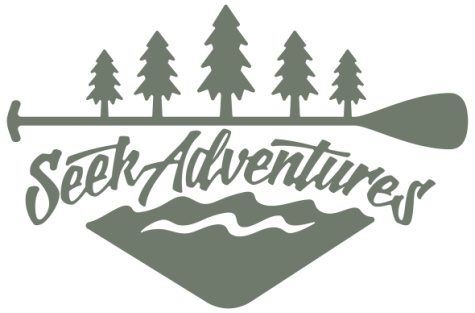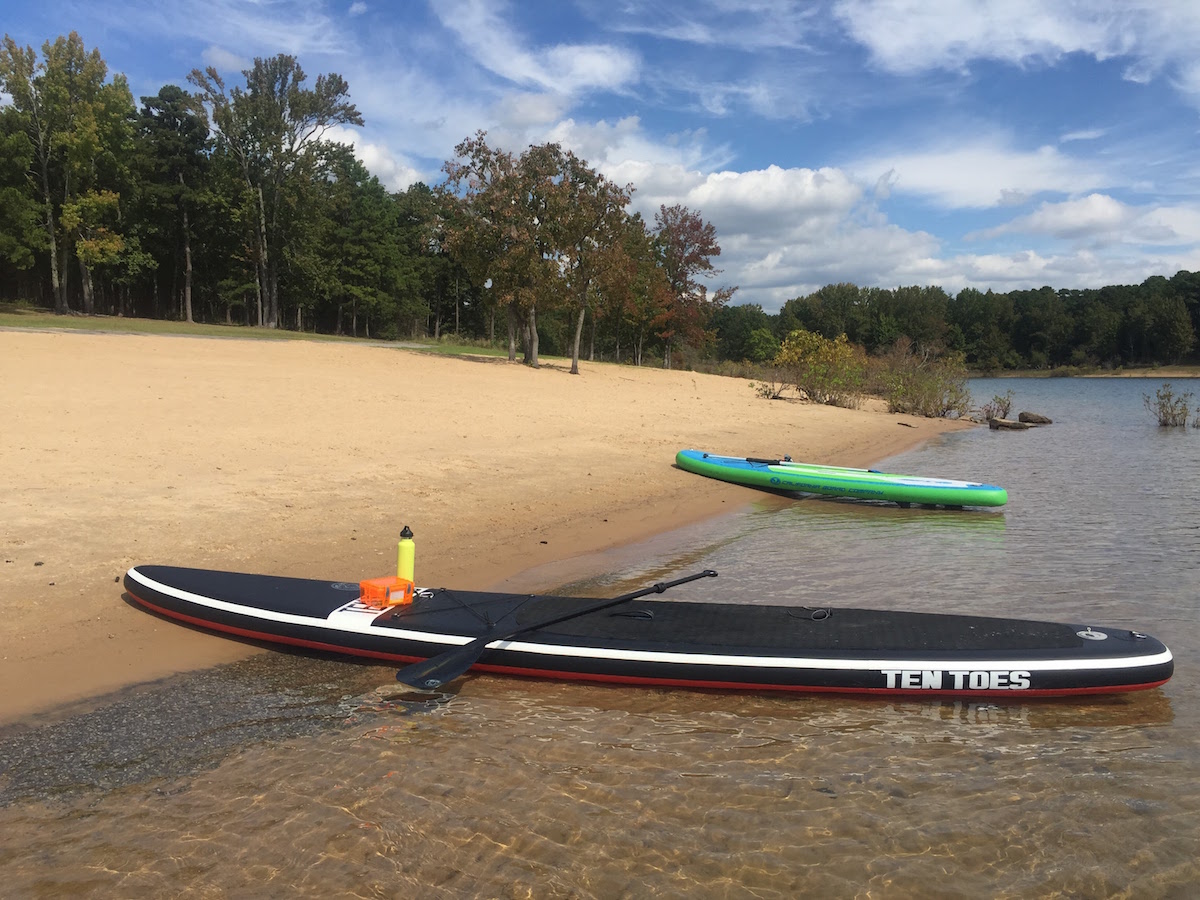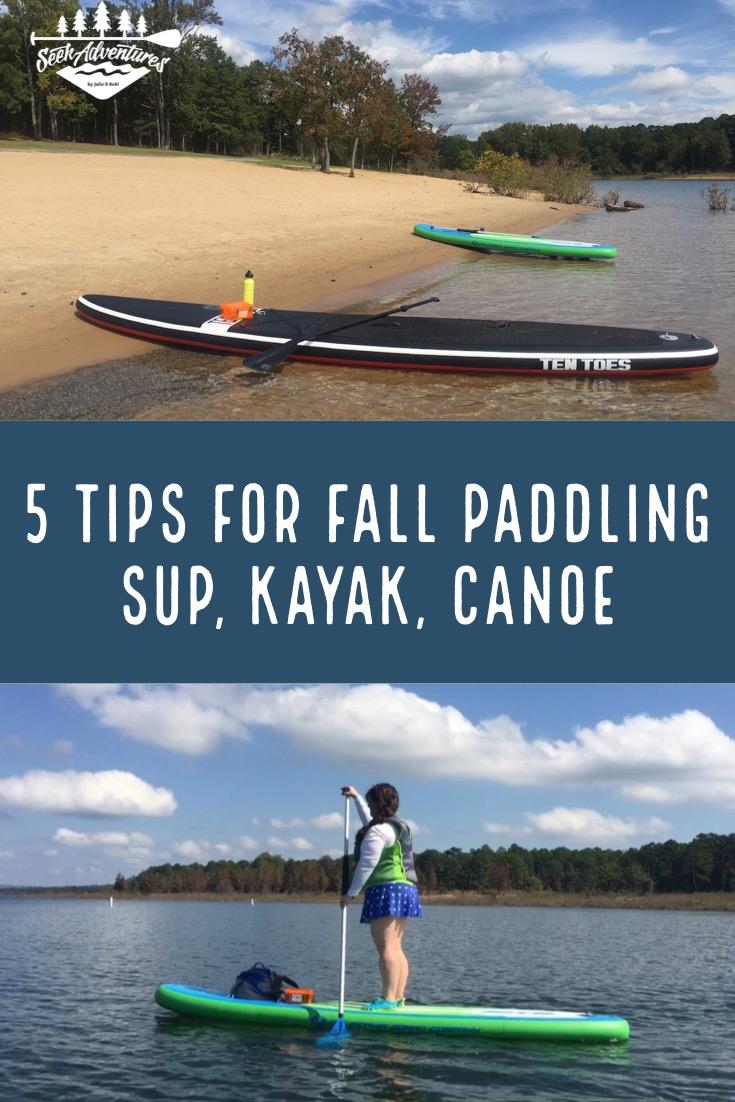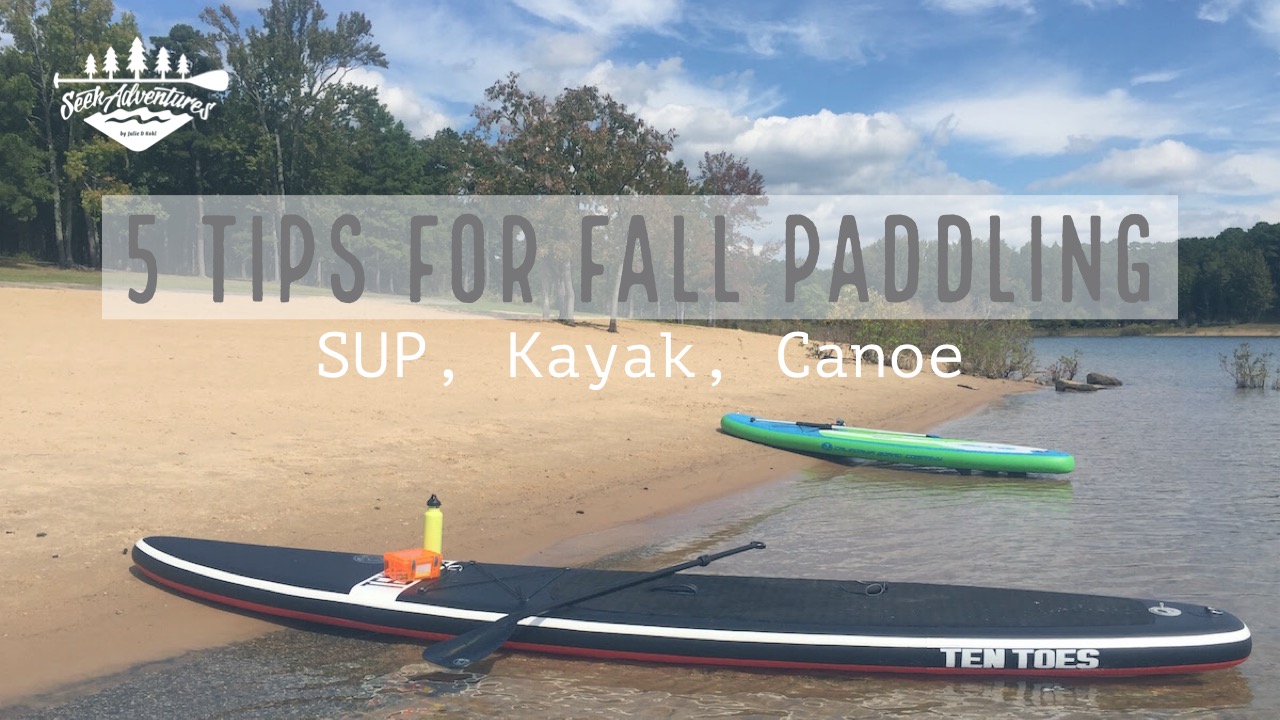The relatively mild fall and spring seasons here in Arkansas mean that lake season can be extended much longer than in other parts of the country. Fall paddling is a lot of fun but there are a few things to consider before you get on the lake. Keep reading for my 5 Tips for Fall Paddling.
Disclaimer: This post contains affiliate links as a means of collecting advertising fees.
When I began to stand up paddleboarding (SUP) in 2015, it never occurred to me that this would be a sport I could continue well into the fall and pick back up in early spring. In fact, there were a few days back in January where I would have gladly gotten out on the water if it weren’t for that job I have!
Last year, we paddled into early November and the lake was warm enough to swim in comfortably until late October. The best part of fall paddling is the quiet and solitude. There are relatively few people around and it is a wonderful time to relax and reflect. However, in the fall, daylight fades quickly and weather and temperatures can be unpredictable. Here are some tips to help you make the best of your fall paddling experience.
5 Tip for Fall Paddling
1. Check the Forecast
The weather in the fall can be pretty mild. In Arkansas, it is not uncommon to see daytime temps in the 70s and 80s. The morning and evening temps can be very cool though. Check the forecast before you get on the water so that you are prepared for when the temps will start to cool off drastically.
It is also important to be aware of wind conditions in the fall. Winds seem to come up quickly and shift and change more than they do in the summer. Be prepared for wind changes so you aren’t caught somewhere where it may be difficult to get back to shore.
2. Dress for the Weather
Taking on the cooler temperatures means it’s time to start thinking about apparel that is more suited to the fall weather conditions. Cotton fabrics probably aren’t the best choice because they dry slowly. In the event that you do get wet, you want to dry off as quickly as possible so quick-drying synthetic fabrics are recommended. Check out this post from REI about choosing proper clothing for cold weather paddling.
3. Eat and Drink Up
My motto when it comes to being on the water is to “plan for the worst but expect the best.”
I can’t even count the number of times I have read stories about paddlers who were unprepared and got themselves into situations that could have been avoided with a little bit of planning. Having adequate food and water is essential to a safe and fun fall paddle.
Remembering to drink water is easy when it’s hot. When you have been paddling for a long time in the cool breeze and the long light of the autumn sun – it’s easy to forget. Hydrate before you get on the water and keep plenty of water with you.
Eating plenty of food is also important. Carbs and high-fat food will give you energy and help keep you warm.
In the fall, I carry two insulated bottles with me. One is full of nice cold water and the other is full of warm cider or hot cocoa. My favorite snacks are granola, homemade beef jerky, Go-gurt and little bags full of cheese, nuts and dried fruits.
4. Carry a Headlamp and a Flashlight
Darkness has a tendency to sneak up on you faster during a fall paddle than at any other time of the year. A headlamp will enable you to get back to your launch site safely. The lamp will provide light for you to see but will also make you more visible to other boaters that may still be on the water.
This is my favorite headlamp. You can even use it underwater!
5. Wear Your PFD and Board Leash
There is a sign just outside of the Old Hwy 25 boat launch that says, “Life jackets worn, nobody mourns.” (The wording is terrible but they do have a point.)
PFD’s and board leashes (SUPs) are there for your protection. In the fall, it is easy to get complacent because the traffic on the lake is so minimal. So many people believe just having their PFD in the boat is sufficient enough. Unfortunately, in most situations that would cause you to actually need it, you aren’t going to have time to dig it out, put it on, and secure it properly. I am a strong proponent that you MUST wear your PFD at all times.
Paddleboarders often use the excuse that they don’t need a PFD because their board is a giant flotation device itself. If you treat it as such then it is essential that you always have your board leash attached. But remember – if you are knocked off your board and are injured or even unconscious that leash will not do you much good. Just get a life jacket and wear it.
Here is my favorite life jacket. If you want something minimal, you may want to check out this inflatable PFD.
Bonus Tip: Bring a Camera
Fall paddling is so much fun. I highly recommend you bring a camera or a smartphone with you to snap some pictures. You will likely capture some beautiful color in the leaves and some mysterious fog rolling across the water. The falling leaves also make it easier to see wildlife. Hawks, eagles and several varieties of waterfowl are in abundance during the fall.
Don’t forget to carry a dry box for storing your camera when it isn’t in use.




Paddling in the fall weather is nice. This blog is really nice and targets the people who are into paddling in spring and fall. The 5 tips told here are nice and the steps are very detailed and targets every issue we all have problem with.